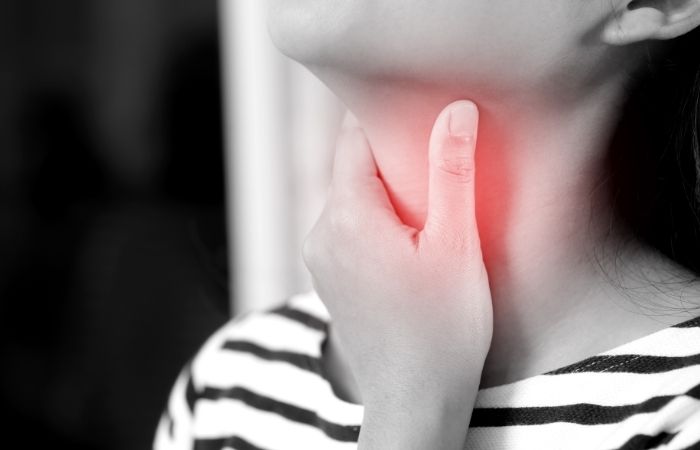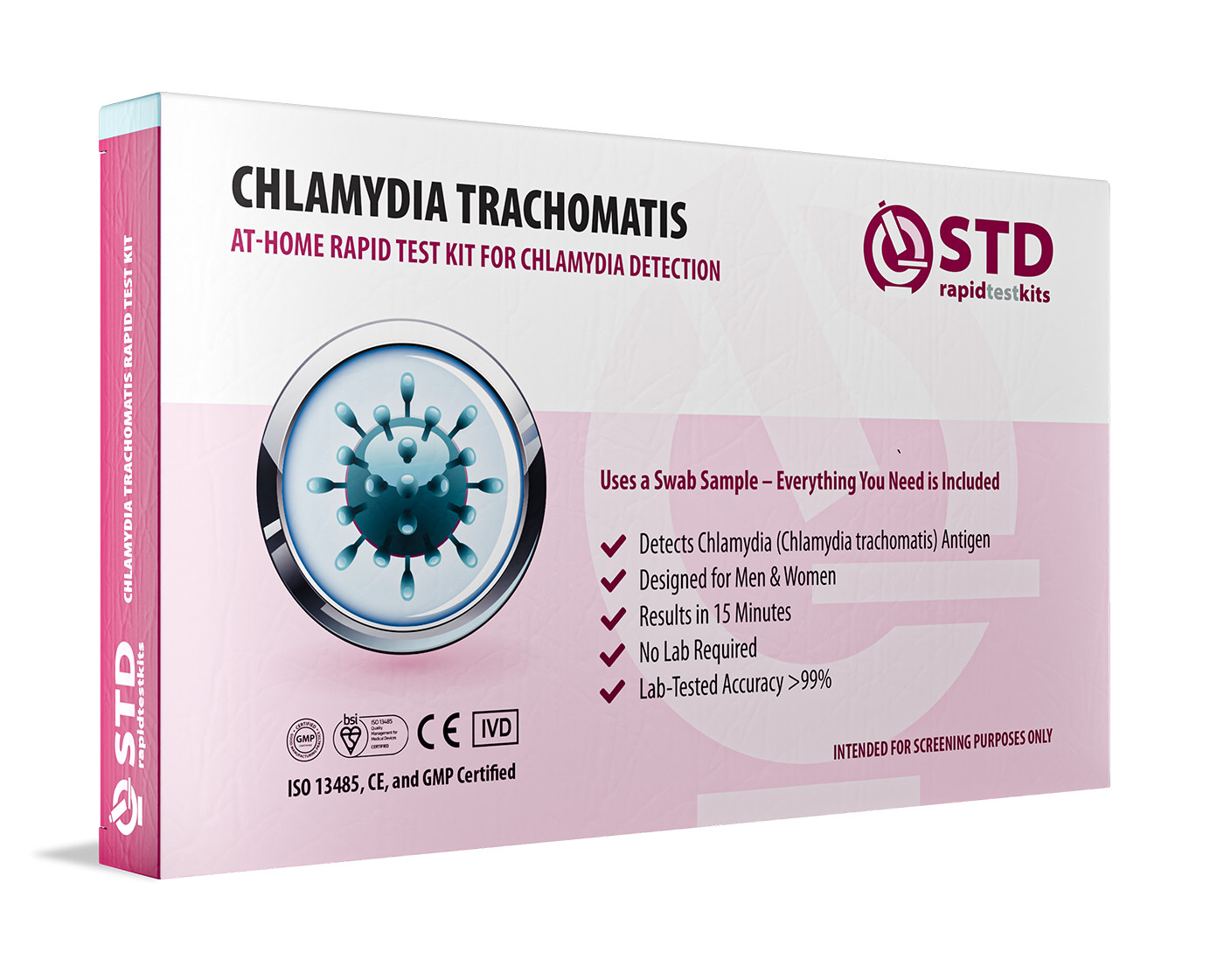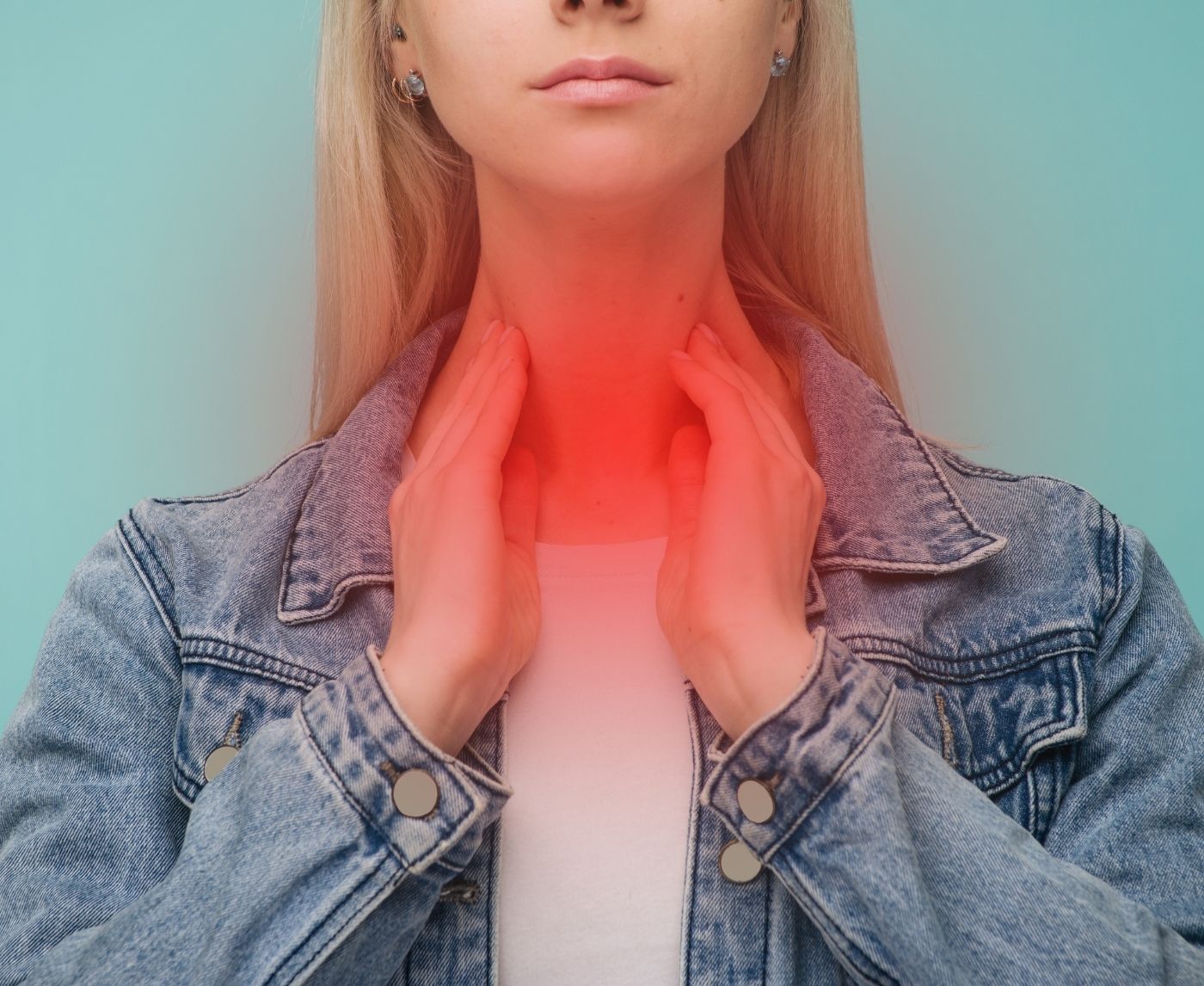Quick Answer: Oral chlamydia can cause sore throat, redness, or no symptoms at all. You can catch it from giving oral sex. Testing is the only way to know for sure, and at-home kits are now available for throat swabs.
When the Pain Lingers, But the Tests Say “Negative”
Miriam, 28, figured it was just another bout of post-bar karaoke strep when her throat flared up two days after a hookup. She went to urgent care, tested negative for COVID, flu, and strep. “They gave me antibiotics anyway,” she said. “I kept feeling like something wasn’t right, but they never mentioned STDs.”
This story plays out constantly. Chlamydia in the throat is often missed because its symptoms, if they appear at all, look just like common viral or bacterial infections: soreness, redness, mild swelling, maybe a swollen lymph node or two. You might have a dry cough or a patchy white film that looks like strep. But unlike strep or mono, it doesn’t always come with fever. You might feel mostly fine, and that’s what makes it dangerous.
According to the CDC, most chlamydia infections are asymptomatic. When it’s oral, the silence is even louder, because routine testing rarely includes the throat unless you specifically request it.
What Oral Chlamydia Actually Feels Like
If you’re searching this in the middle of the night, you’re not alone. One of the most common real-world search queries is: “sore throat after oral sex” or “STD in throat vs strep.” Let’s break down what you might feel, and what makes this different from a regular sore throat.
| Symptom | Oral Chlamydia | Strep Throat |
|---|---|---|
| Sore or scratchy throat | Yes, mild to moderate | Yes, often severe |
| Fever | Rare | Common |
| White patches on tonsils | Sometimes | Often |
| Swollen lymph nodes | Occasionally | Yes |
| Response to antibiotics | Only responds to STD-specific antibiotics | Improves with penicillin or amoxicillin |
| Commonly tested? | No, unless requested | Yes, routinely |
Table 1. Comparing sore throat symptoms from oral chlamydia and strep throat.
Keep in mind, this isn’t a checklist. Some people have oral chlamydia with zero symptoms at all. That’s why testing is critical, especially if you’ve recently given oral sex to a new or untested partner, with or without a condom.

People are also reading: When Antibiotics Leave You Vulnerable to More Than Yeast Infections
Yes, You Can Get Chlamydia From Giving Oral
This surprises a lot of people, especially those who thought oral sex was “safer” or even risk-free. But the reality is this: chlamydia is a bacterial infection that can take hold in the throat, urethra, vagina, or rectum. If you give oral sex to someone with a genital chlamydia infection, it can transmit directly to your throat, even if they didn’t finish or you used a condom part of the time.
The risk is even higher when sex is spontaneous, involves multiple partners, or happens without recent STD testing. Many don’t realize that even when symptoms are absent, a partner can still transmit the infection. And unlike condom use for vaginal or anal sex, protection during oral is often skipped, especially in casual or party settings where mood and momentum take over.
“I didn’t even know that was possible,” said Raymond, 21, who tested positive for oral chlamydia after experiencing soreness and a mild rash in his throat. “We only hooked up once, and it was just oral. I figured I was fine.”
Raymond isn’t alone. A 2022 study in the journal Sexually Transmitted Infections found that oral chlamydia was significantly underdiagnosed in cis men and women, particularly those who had only received genital tests. Even among people who had multiple partners, oral swabs were often omitted from screening panels.
Check Your STD Status in Minutes
Test at Home with RemediumChlamydia Test Kit

 For Men & Women
For Men & Women Results in Minutes
Results in Minutes No Lab Needed
No Lab Needed Private & Discreet
Private & DiscreetOrder Now $33.99 $49.00
Why Clinics Often Miss It (And What You Can Do)
Here’s one of the biggest problems with oral chlamydia: many healthcare providers don’t test for it unless you specifically ask. Even during full STD panels, routine screening usually targets the genitals and sometimes the rectum, leaving the throat out of the picture entirely.
So if you’re feeling symptoms, or even if you’re not, but you’ve had recent unprotected oral sex, the onus is on you to advocate for an oral swab. But that’s not always easy. Many people feel awkward asking. Others don’t have access to in-person testing, or they assume that their negative genital result covered everything.
This is where discreet, at-home kits can fill the gap. Options now exist for oral chlamydia test kits that include clear instructions and swabs designed for the throat. Some offer results within minutes; others are lab-analyzed after mailing your sample. Both offer privacy, control, and an option when clinics fall short.
When Should You Test? Timing Matters
Let’s say you gave oral sex last night. You wake up with a tickle in your throat and freak out, understandably. But testing right away might not give you accurate results. Like other STDs, chlamydia has a window period, the time between exposure and when it can be reliably detected on a test.
Here’s what you need to know:
| Test Type | Earliest Reliable Detection | When Accuracy Peaks |
|---|---|---|
| NAAT (lab-based swab test) | 5–7 days post-exposure | 14 days |
| Rapid antigen test (home test) | 7–10 days | 14–21 days |
| Clinic combo testing (includes throat swab if requested) | 5–7 days | 14+ days |
Table 2. Oral chlamydia testing accuracy by method and timing.
If it’s been less than five days since exposure, wait it out, unless you’re experiencing extreme symptoms or were exposed through assault or high-risk circumstances. Testing too early can yield false negatives. But if you’re in the 7–14 day range, especially with symptoms, go ahead and test. If results come back negative but your symptoms persist, plan to retest again at the 14-day mark for clarity.
If your head keeps spinning, peace of mind is one test away. You can order a discreet combo kit that checks for multiple infections, including oral variants. No appointments. No judgment. Just answers.
Why Retesting Matters More Than You Think
Alejandro, 33, tested negative for chlamydia ten days after a summer festival hookup. “I felt off, like my throat was tender and I had this weird rash on my tonsils,” he recalled. “But the test was clean, so I figured it was anxiety.” Three weeks later, his symptoms were still hanging around. He retested. This time? Positive.
That’s not uncommon. Because oral chlamydia often starts mild, or totally silent, it’s easy to dismiss those early throat symptoms. But if you test too soon, your body may not have produced enough detectable bacteria to trigger a result. That’s why medical guidelines (like those from the NHS and CDC) recommend retesting 2–3 weeks after exposure, and again 3 months after treatment in some cases, especially if you’re sexually active with new or multiple partners.
Retesting is especially important if:
You were treated recently, but your symptoms returned. You had multiple encounters close together. You weren’t sure when the exposure occurred. Or you were exposed to a partner who hadn’t tested or treated properly.
Bottom line: a single test doesn’t always close the case. Your timeline, symptoms, and exposure history matter too.
Can Oral Chlamydia Spread to Other Parts of the Body?
A lot of people are afraid of this, and it's a good fear. If left untreated, oral chlamydia can potentially spread to other areas through self-inoculation (like using saliva as lube), or through continued sexual contact. More often, though, it remains localized, but continues to infect partners during kissing, oral sex, or even sharing certain objects like sex toys.
There’s also the issue of silent spread. If you’re carrying chlamydia in your throat, you may pass it to your partner’s genitals without either of you knowing. That’s why prompt testing, treatment, and partner notification matter, not just for your health, but theirs.
In very rare cases, untreated chlamydia can cause more serious problems, like reactive arthritis or strains that are resistant to antibiotics. It's not about being scared; it's about stopping it.
How to Talk to a Partner (Without Shame)
Kiera, 26, described the hardest part of her diagnosis as not the symptoms, but the conversation. “I knew I had to tell him. We only hooked up once, and I wasn’t sure how he’d react. But it felt wrong not to. I just said it straight: ‘Hey, I tested positive for something. You might want to get checked too.’”
This kind of honesty is rare, but powerful. The stigma around oral STDs keeps people quiet, even though infections like chlamydia, gonorrhea, and HSV-1 are incredibly common. You don’t owe shame to anyone. What you owe yourself is clarity, and what you owe your partner is a heads-up, so they can protect their own health too.
You can approach it via text, use anonymous partner notification tools from clinics, or ask your doctor or telehealth provider for support. Scripts help. Empathy helps more. And if the other person reacts poorly? That’s about them, not your value or worth.

People are also reading: Too Anxious to Go to a Clinic? Telehealth Has You Covered
Can You Prevent This From Happening Again?
Absolutely. It starts with understanding that oral sex isn’t risk-free. Using condoms or dental dams during oral isn’t about killing the vibe, it’s about giving yourself peace of mind after the fact. Testing regularly, especially with throat swabs included, keeps the invisible visible. And if you’ve been treated, wait until your follow-up test clears you before engaging in oral sex again.
If you and your partner want to ditch condoms or barriers, agree on a shared testing plan. It’s not weird, it’s wellness. Getting tested before ditching protection is a form of care, not control.
Whether this is your first time confronting an STD scare or your tenth, remember: knowing your status gives you power. It ends the what-ifs and starts the healing. And with STD Rapid Test Kits, you don’t have to wait for an appointment or push through clinic anxiety. You can test discreetly, quickly, and on your terms.
Check Your STD Status in Minutes
Test at Home with Remedium7-in-1 STD Test Kit

 For Men & Women
For Men & Women Results in Minutes
Results in Minutes No Lab Needed
No Lab Needed Private & Discreet
Private & DiscreetOrder Now $129.00 $343.00
For all 7 tests
Why This STD Stays Hidden , and How Shame Makes It Worse
Let’s be real: people don’t talk about oral chlamydia the same way they talk about other STDs. There’s already enough stigma around STDs in general, but when it comes to the ones that don’t show up in your pants, the silence is louder. It’s like the symptoms aren’t “real enough” to take seriously. A sore throat doesn’t scream emergency. It whispers maybe you’re being dramatic.
Lena, 30, said she waited nearly a month before getting tested. “I didn’t want to seem crazy,” she said. “It was just a weird soreness in my throat. I’d already tested negative for strep and COVID. I figured it was anxiety. But deep down, I knew I’d had unprotected oral sex with someone new, and I couldn’t stop worrying.”
She eventually ordered a home kit and tested positive. But in that waiting period, the shame kept her quiet. “I kept thinking, ‘What kind of person gets chlamydia in their throat?’” she admitted. “Like I’d done something dirty.”
But here’s the truth: oral sex isn’t niche, and it isn’t new. It’s part of most people’s sex lives, across all genders and orientations. You don’t have to be wild or reckless to catch an oral STD. You just have to be human, and in the wrong place at the wrong time without protection. That’s it. That’s the formula.
And yet, because of how we’re socialized to view STDs, especially ones that don't “look like” STDs, we blame ourselves. We hesitate to ask our partners about their testing history. We avoid doctors, afraid of judgment. We downplay symptoms. We keep Googling at 2AM instead of getting answers.
Worse, providers sometimes echo that shame back to us. A lot of patients report being brushed off when they ask for oral swabs. “You don’t need that,” they’re told. Or: “Let’s just do the usual tests.” Some don’t even know that oral chlamydia is a thing. That kind of dismissal leaves people stuck, doubting themselves, and untreated.
That’s why at-home kits have become more than just a convenience, they’re a necessity. They let you bypass the awkward conversation. They put the power back in your hands, literally. You swab, you send it in, or you get results right at home. No clipboard. No eyebrows. Just data.
And data heals. Because when you know your status, you stop spinning. You stop wondering. You can treat it, clear it, and move on. That’s what matters most.
If you've been putting off testing because the sore throat didn’t seem “serious enough,” take this as your sign. Your concern is valid. Your body deserves clarity. And whether your result is positive or negative, you gain power either way.
You can order an oral chlamydia test here, privately, discreetly, and on your schedule. Or choose the combo kit if you want to cover all bases at once. Either way, you’re stepping out of the fear spiral and into clarity. And that’s something to be proud of.
FAQs
1. Can you really get chlamydia from giving someone a blowjob?
Yes, and it doesn’t matter if they finish or not. If your partner has chlamydia genitally, the bacteria can move from their body to your throat during oral. It’s a lot more common than people realize, especially because so few folks use condoms for oral sex. If you’ve ever skipped the latex and now have a sore throat that won’t go away… it might not be allergies.
2. What does oral chlamydia actually feel like?
Honestly? It might not feel like anything. That’s part of the problem. When it does cause symptoms, it can feel like a mild sore throat that lingers longer than a cold. Maybe some redness, irritation, or those weird white streaks on your tonsils that make you Google “strep vs STD throat.” You might feel fine otherwise, which is why it gets missed a lot.
3. How soon after oral sex can I test for chlamydia in my throat?
The sweet spot is around 7 to 14 days after exposure. Testing earlier than that could miss the infection, but if you’re already having symptoms, it's okay to test sooner and plan to retest. If your test comes back negative but your throat still feels off, trust your gut, retest in a week or so. Your body, your call.
4. I tested negative at the clinic. Does that mean I don’t have oral chlamydia?
Maybe, but only if they swabbed your throat. Most clinics don’t include an oral test unless you ask for it. So if they only did a urine sample or genital swab, your throat might’ve been completely overlooked. Don’t be afraid to ask for exactly what you need. You’re not being dramatic, you’re being thorough.
5. Does it go away on its own?
It might. But that doesn’t mean it should. Leaving oral chlamydia untreated means you can keep spreading it without knowing, and there’s always a risk it could travel or lead to complications. If you’ve got it, get it treated. A quick round of antibiotics usually clears it up fast.
6. Could I give it to someone by kissing?
Kissing isn't the main way it spreads, but in theory, if you’ve got it in your throat and there’s deep, open-mouth kissing with gum bleeding or open sores, it’s not impossible. The bigger risk is giving oral to someone else and passing it that way. Safer oral is real, and dental dams or condoms help more than most people think.
7. Do I have to tell my partner if I test positive?
You’re not legally required in most places, but ethically? It’s the right thing to do. You don’t have to write a monologue. Just send a message: “Hey, just a heads up, I tested positive for oral chlamydia and you might want to get tested too.” Simple. Direct. Protective. If they freak out, that’s on them, not you.
8. Is there an at-home test for oral chlamydia?
Yep. You can swab your own throat and either get a rapid result at home or mail it in for lab processing. Just make sure the kit includes a throat swab, some only cover genital infections. The good news? It's private, discreet, and easier than trying to explain all this to a walk-in clinic nurse during your lunch break.
9. Can oral chlamydia come back after treatment?
It can, usually because your partner didn’t get treated too, or you had a new exposure. That’s why doctors recommend a retest after three months. Reinfection isn’t a failure, it’s just life. The trick is staying on top of your status, not shaming yourself for being sexually active.
10. How long until I can hook up again?
Most people are cleared to resume sexual activity seven days after finishing antibiotics, if they’re symptom-free. But wait until your partner is treated too, or you’ll just pass it back and forth like a gross game of ping-pong. No fun for anyone.
You Deserve Answers, Not Assumptions
It’s easy to doubt yourself when your throat hurts and no one takes you seriously. It’s even easier to delay care when you’re scared, ashamed, or just exhausted from searching for answers. But you’re not alone, and you’re not overreacting. Oral chlamydia is real, treatable, and testable.
Don't let quiet win. Get answers that don't violate your privacy or your body. This at-home combo test kit quickly and discreetly checks for the most common STDs, so you can move on without worrying.
How We Sourced This Article: We combined current guidance from leading medical organizations with peer-reviewed research and lived-experience reporting to make this guide practical, compassionate, and accurate.
Sources
2. Planned Parenthood – Chlamydia
3. Chlamydial Infections – Treatment Guidelines (CDC)
4. About STI Risk and Oral Sex (CDC)
5. Chlamydia – StatPearls (NIH/NCBI)
6. Incidence and Duration of Pharyngeal Chlamydia Among MSM (PMC)
7. STI Pathogens in Oropharynx: Screening & Treatment Update (PubMed)
8. High Prevalence of Chlamydia trachomatis and Neisseria gonorrhoeae at Pharyngeal Site (BMJ Open)
About the Author
Dr. F. David, MD is a board-certified infectious disease specialist focused on STI prevention, diagnosis, and treatment. He blends clinical precision with a no-nonsense, sex-positive approach and is committed to expanding access for readers in both urban and off-grid settings.
Reviewed by: Dr. Evelyn Park, MPH | Last medically reviewed: November 2025
This article is for informational purposes and does not replace medical advice.










